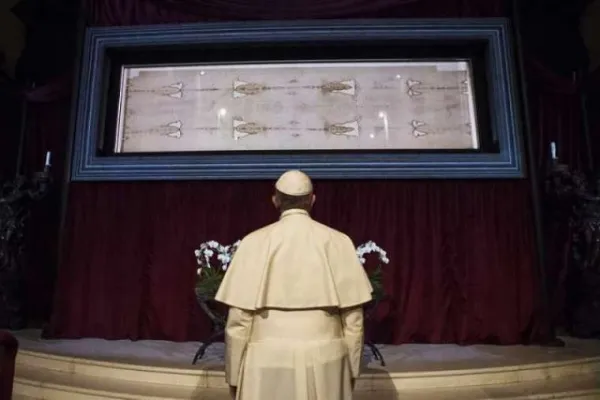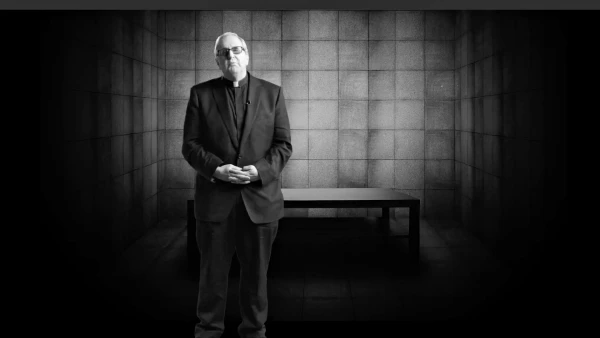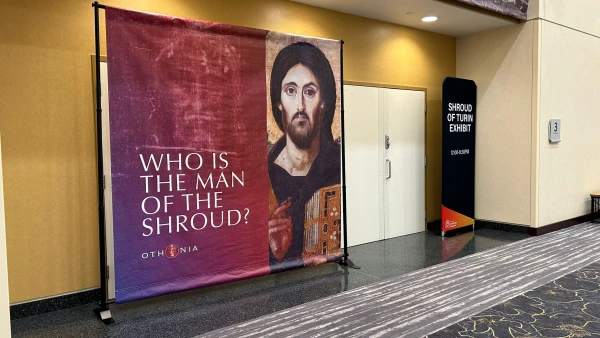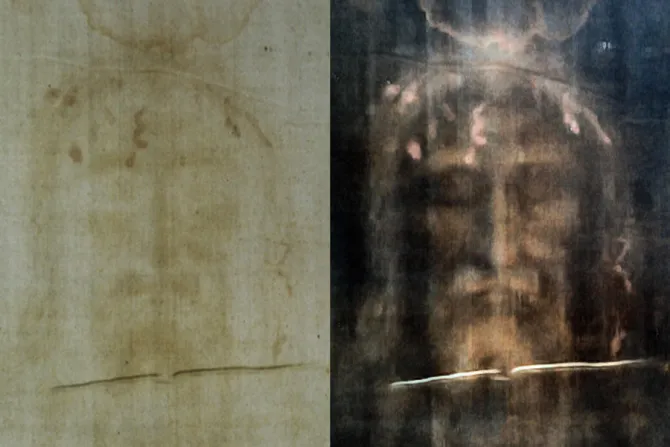Washington, D.C. Newsroom, Aug 27, 2024 / 14:45 pm
A new study from an Italian researcher that analyzes the blood on the Shroud of Turin argues that the stains are consistent with the torture and crucifixion of Jesus Christ as described in the Gospels.
Giulio Fanti — a professor of mechanical and thermal measurements at the University of Padua — claims that a macroscopic and microscopic analysis of the bloodstains accurately reflects “the physical conditions relating to Jesus Christ” that are “consistent with the description of Jesus Christ in the holy Bible and, in particular, within the four canonical Gospels.”
Fanti has authored more than 50 studies on the Shroud of Turin and has published books on the subject as well. The shroud, a burial cloth that many believe was used to wrap the body of Christ after his death on the cross, has been the subject of significant academic debate in the past few decades, with some defending its authenticity and others asserting that it is a medieval forgery.
The shroud is imprinted with the body and face of a man wearing a crown of thorns and is covered in bloodstains. It is held in the Chapel of the Holy Shroud in Turin, Italy, where many Catholics venerate it as a holy relic of Christ’s crucifixion. The Vatican does not have an official position on its authenticity.
According to Fanti’s study, the bloodstains on the side and the front of the shroud show blood flowing in three different directions: vertical with the body in an upright position, inclined at a 45-degree angle, and horizontal with the corpse resting on its side. Fonti asserts that “the single rivulets show a sudden change of their direction; it is probable that the blood flows streamed when the corpse was moved.”
The study adds that the three distinct colors of blood suggest three “different types of blood,” which are “postmortem blood leakage” from moving the body, the less evident ones that appear to be “premortem bloodstains” that likely occurred “when Jesus was still nailed to the cross,” and “leaks of blood serum.” It adds that the stains appear to show scourge marks consistent with the scourging at the pillar and that the quantity of blood matches the amount of blood that would have resulted from the wounds described in the Gospels.

Additionally, nanoparticles found in the blood “recognized as creatinine” are consistent with “the very heavy torture suffered by Jesus,” according to the study. It adds that “the high level of urea hypothesized” in some of the blood “implies renal … malfunction or blockage, which is a condition compatible with intense flagellation … in the area of the kidneys, causing microcytic anemia.”
“This microcytic anemia, also increased by prolonged fasting, suggests the extreme difficulties Jesus had in exchanging oxygen, which most likely resulted in extremely labored breathing,” the study continues.
“Jesus had to heavily increase his breathing,” the study adds, “and, consequently, increase the frequency of his heartbeats, which prompted a heart attack as the main cause of his death.”
Father Robert Spitzer, a Jesuit priest and president of the Magis Center of Reason and Faith, told CNA that “all of these indications [found in Fanti’s study] coincide with the crucifixion of Jesus Christ.” Spitzer has been a strong supporter of the authenticity of the Shroud of Turin.

Spitzer said that the creatinine in the blood “generally indicates a heavy polytrauma [severe injuries in multiple locations],” adding that “the blood came from a person who had undergone tremendous heavy polytrauma.”
“The man certainly was struggling to breathe [as well],” Spitzer said, citing the findings in the study. “He had undergone real tortures. …You can tell that he lost a tremendous amount of blood … especially from the whipping — the scourging that he received.”
According to Spitzer, the blood evidence points to the “unique crucifixion of Jesus on the cross.” In defending the authenticity of the shroud, he said “a medieval forger” could not have possibly anticipated 21st-century scientific studies of the cloth: “[He] certainly would not have used the hematic serum of a victim who experienced a heavy polytrauma.”
Spitzer referenced other recent studies to defend the authenticity of the Shroud of Turin, particularly the 2022 wide-angle X-ray scattering analysis published by Italian researchers at the National Research Council in Bari. The team of researchers was led by Liberato De Caro.
(Story continues below)
The study used wide-angle X-ray scattering to examine the natural aging of cellulose in a sample of the Shroud of Turin, which determined that the age of the fabric should be about 2,000 years old — consistent with the period in which Christ died. The findings conflicted with a famous 1988 carbon dating study, which placed the age of the Shroud of Turin in the 13th or 14th century.
Spitzer told CNA that the X-ray scattering is “a really ideal dating test” and that it “really adds a credibility to the other data that has been garnered.” He also referenced studies that analyze pollen DNA, saying the Shroud of Turin “had to be in the open air for … three to four centuries at least” in the area of northern Judea and Jerusalem to account for the pollen from indigenous plants.
Additionally, Spitzer criticized the 1988 carbon dating study as unreliable, alleging contamination can affect carbon dating and that the researchers only took material from a small portion of the shroud rather than taking multiple samples from different parts of the shroud. He noted that the Shroud of Turin was damaged in a fire in the 1500s and repaired with material from that era and asserted that the fabric used in the carbon dating study “definitely is not the same as the linen cloth that the rest of the shroud is made of” but instead fabric added during the repair in the Middle Ages.
Despite the public debate about its authenticity, the Shroud of Turin continues to attract pilgrims from around the world and remains the subject of public interest.
The shroud was honored at the National Eucharistic Congress just last month at the Indiana Convention Center in Indianapolis with a 14-foot replica and a high-tech educational exhibit.

The shroud also reentered the public spotlight last week when the New York Post published an image created with artificial intelligence meant to recreate the face of Jesus Christ based on the imprint on the Shroud of Turin. In 2022, the Museum of the Bible in Washington, D.C., hosted an exhibit on the Shroud of Turin for five months.






